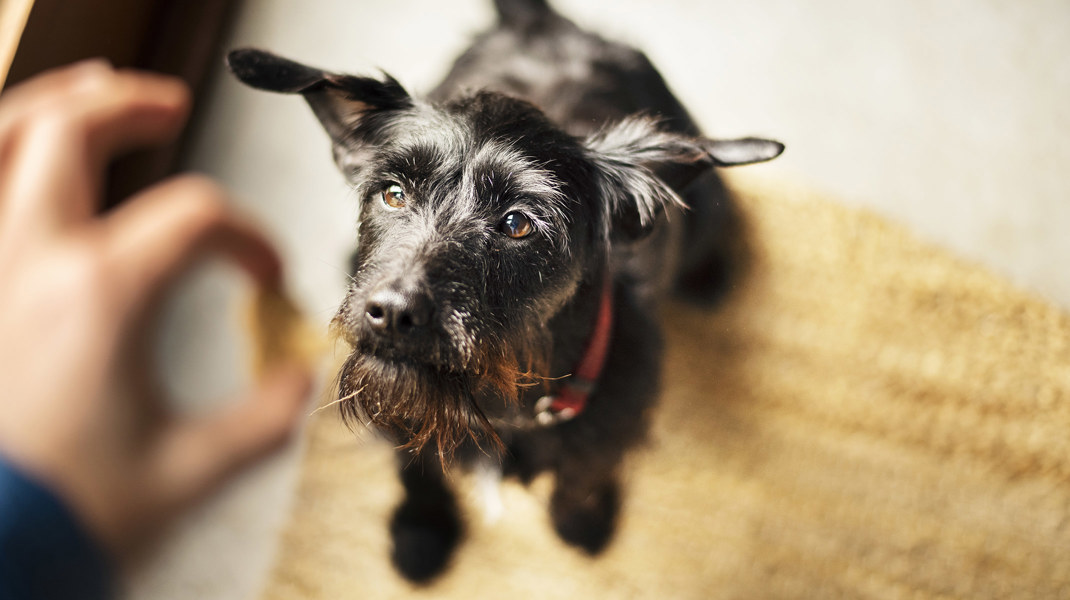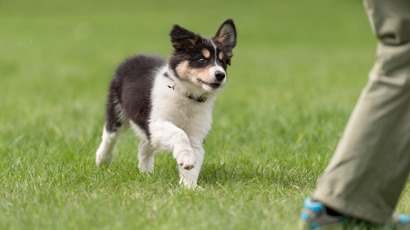Tips for keeping up your training routine at home

Separating work and home life can be difficult when working from home, and it’s easy to let your dog’s training routine slump.
However, consistency is key to your furry friend’s training success, so it’s important to stick with it, even when your circumstances change. Here are our tips to help you keep it up as you navigate your new home-work life - of course make sure you have some tasty treats ready!
Consistency is key to dog training success
Having a set training routine is a vital part of raising a happy, health dog who’s a valued, four-legged member of the family. Regular training not only helps them learn new behaviours, it gives them a regular dose of mental and physical stimulation and teaches you how to communicate with one another
That said, when your schedule goes through changes – for example, by switching from working in the office to working from home – it can have a knock-on effect on your dog’s routine, including their training schedule.
Four simple ways to keep to your dog training routine
The good news is, there are some easy steps you can take to ensure your mate’s training sessions don’t hit the cutting-room floor too frequently. Here are four tips for help you maintain your dog’s training routine at home:
1. Put it in your planner and set an alarm
Whether you use an email planner, book appointments into the calendar on your phone or jot them in a date book, having the visual reminder already entered makes it feel official. As a result, you’re more likely to stick to it. If you want, you can double down by setting an alarm to go off five minutes beforehand to ensure you’re ready to go.
2. Keep a record of your sessions
It can be easy to overlook how many sessions you’ve blown off when working from home – and it may feel like nothing. Keeping a record of your sessions (both, the ones you have stuck to and the ones you skipped) can help you keep yourself accountable.
3. Keep puppy and work times and spaces separate
Giving into their every (cute) request for attention not only has a negative impact on your productivity, but also on their obedience training and general behaviour. Similar to small children, when dogs learn they can get your attention whenever they want, it’s likely they’ll repeat the nagging behaviour more frequently.
Pooches who are receiving attention freely all day, may develop separation anxiety when it is suddenly removed, which could become problematic when you leave the house. This can also derail your training efforts, so you should help your dog understand that work time doesn’t equal play time.
4. Ensure your other training efforts remain consistent
There are plenty of daily ‘mini-routines’ which help consolidate what your dog learns in their training sessions – for example, sitting and staying at dinner times or sitting calmly when guests arrive. These help you implement their training into a real-life context and ensure you practise communication and praise, which can strengthen your bond.
Having a work-from-home owner is many dogs’ dream scenario, but it can be beneficial to to pencil both ‘dog time’ and work commitments into your diary.
This clear separation can help avoid training relapses down the track and will set you up for a successful work-from-home life, so your relationship to your best bud can stay on track.


